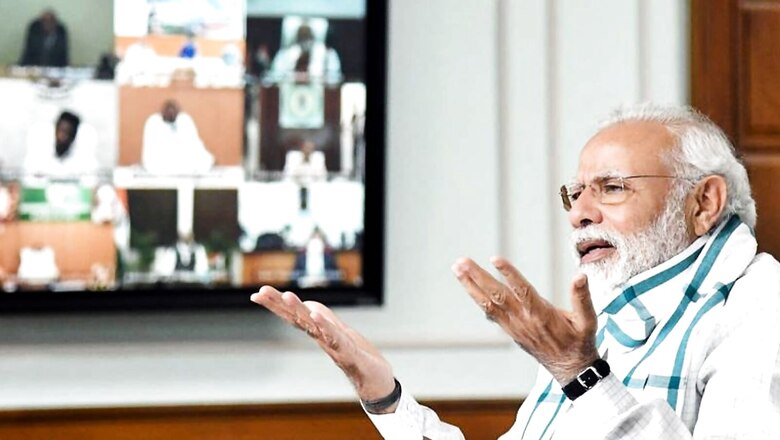
views
As the well-known adage goes vaccines don’t save lives, vaccination does. Nearly 60% of the entire population in India is fully vaccinated and 71% received at least one dose currently. In sync with the WHO’s revised strategy of 70% total population coverage by end-June 2022, the country is administering 130 doses per 100 people, a shade below the global average of 139.
The Journey So Far
While India’s robust vaccine industry is a strong point, the geography and diversity were reasons for anxiety for a smooth vaccination programme. What is often not visible is that the routine immunisation programme is a piece of well-oiled machinery and has successfully handled very large-scale campaigns such as polio eradication or Mission Indradhanush, setting up effective mechanisms of inter-agency collaboration. The uptake of Covid-19 vaccines, so far, is an overwhelming endorsement of vaccine confidence – an affirmation in the effectiveness and safety of the vaccine, the system that delivers, the reliability and competence of the health services and professionals and perceived motivations of the policy-makers. It is also a marker of trust in governments – central, state and local– designing policies and programmes, as well as in hundreds of thousands of frontline health workers who gave a shape to these blueprints.
A key ingredient to which the success has been attributed is the whole-of-government approach that was adopted early on in the pandemic. What exactly is this? Is this mere rhetoric or has the government been able to walk the talk?
Untangling the Concept of ‘Whole-of-Government’
The tasks of organising pandemic response are best understood as a system of “wicked problems”, encompassing sub-systems of medical care, vaccine designing, production and conducting the campaign. It also meant responding to a crisis situation and creating a means of ensuring integrated service delivery to the population as a whole. The whole-of-government (WG) approach was drawn upon as this was a macro-political objective and also to address “wicked” issues that straddled boundaries of public sector organisations, administrative levels and policy imperatives.
Whole-of-government is an overarching term for a group of responses to the problem of increased fragmentation of the public sector and public services and a wish to increase integration, coordination and capacity. It seeks to achieve horizontal and vertical coordination and aims to transcend departmentalism and vertical silos. This was critical to achieving a shared goal and an integrated government response, entailing coordination at the top of the government, integration in the frontlines of implementation and partnerships with the private sector.
There are five key ingredients of a WG approach: a fluid and adaptable ecosystem approach that incorporates or removes players as the shared mission evolves; a clear definition of the problem with a shared understanding of the task and consensus on the most effective strategies; identifying and mobilising the right actors and tools; ensuring consistent and predictable funding; and, close coordination among domestic and international partners.
The high-level National Task Force was set up in April 2020 for COVID-19 related research in the domain of science and vaccine development co-chaired by Member (Health), NITI Aayog and Principal Scientific Adviser to the Government of India. It drew upon experts and representatives from relevant fields to include multiple perspectives and enable broad-based coordination. Multiple collaborations were set up with the private sector in the realm of diagnostics, equipment and vaccines.
New regulatory ecosystems were created; for example, the Department of Biotechnology (DBT) set up an Empowered Committee, consisting of the Review Committee on Genetic Manipulation (RCGM) and Central Drugs Standard Control Organisation (CDSCO), to examine the applications for the development of vaccines, diagnostics, prophylactics and therapeutics and recommending approval within an agreed timeframe. A multi-disciplinary National Expert Group on Vaccine Administration for COVID-19 (NEGVAC) was set up on August 12, 2020 to oversee the vaccine roll-out strategy. The DBT funded the development of more than 15 vaccine candidates including support for the clinical trial sites, immunoassay labs and animal challenge models. The Indian SARSCoV-2 Genomic Consortia (INSACOG) launched on December 30, 2020 is a collaborative model across the Ministry of Health, DBT, Council for Scientific and Industrial Research (CSIR) and Indian Council of Medical Research (ICMR). The Ministry of Health and the Ministry of Information and Broadcasting were in constant collaboration through their various constituents to promote health messages and engage with misinformation and rumours.
The Road Ahead
The early challenges of the Covid response – medical care, vaccine research, production and rollout coincided with the devastating first and second waves that led to a “rallying around the flag”. With the National Disaster Management Act in force, it was an easier mobilisation of departments towards WG. As Covid-19 transforms from its current framing of a “health disaster” into a more protracted “slow disaster,” the focus is on reviving and rebuilding the economy, education and social services as well as care of long-Covid and keeping the health services in a state of pandemic preparedness. Vaccine complacency is already manifest; doses of Covid-19 vaccines administered in February 2022 were half that of January 2022 and the lowest in nine months.
The global experience of WG in emergency situations is that it is invoked by the political and administrative leadership to enable “cutting across traditional boundaries” and tends to be a relatively assertive top-down style by the centre. Specifically, coordinative mechanisms are created inside existing central structures that increase the strategic leadership role of the cabinet and/or a core group. High-level decisions are brought to bear upon sectoral authorities for adding teeth to collaboration and coordination, circumventing traditional arrangements of formal collaboration.
Lest it is misconstrued, whole-of-government invoked at the top-most central level is meant for selective situations and not intended to solve all governmental problems. Best not imposed from the top down, it is a lot more about being a strategic enabler across lower-level politics, local government organisations, civil society and market-based organisations to work together. And, that will be a game-changer in the endemic phase.
Dr Rajib Dasgupta is Chairperson at the Centre of Social Medicine and Community Health, Jawaharlal Nehru University, New Delhi. The views expressed in this article are those of the author and do not represent the stand of this publication.
Read all the Latest Opinion News and Breaking News here




















Comments
0 comment